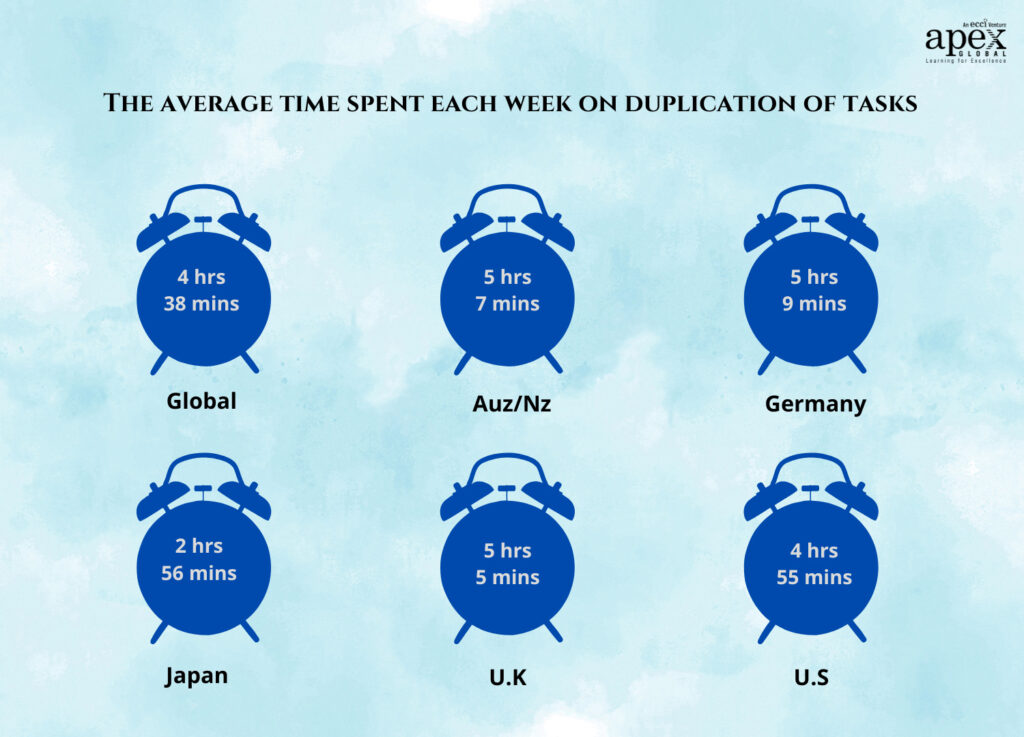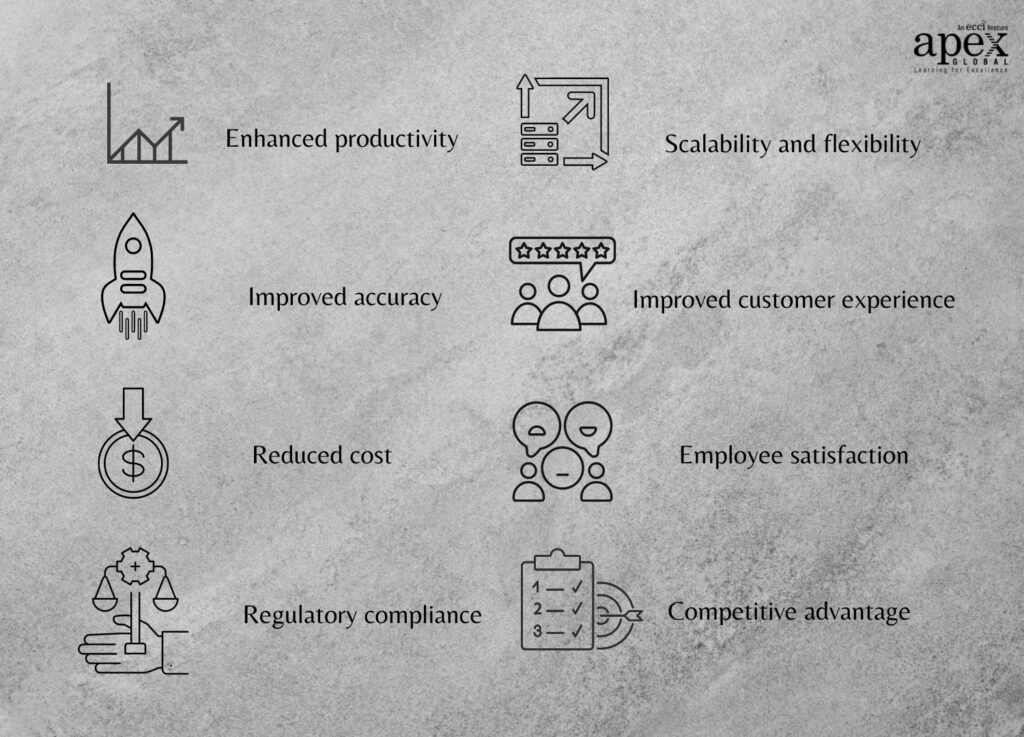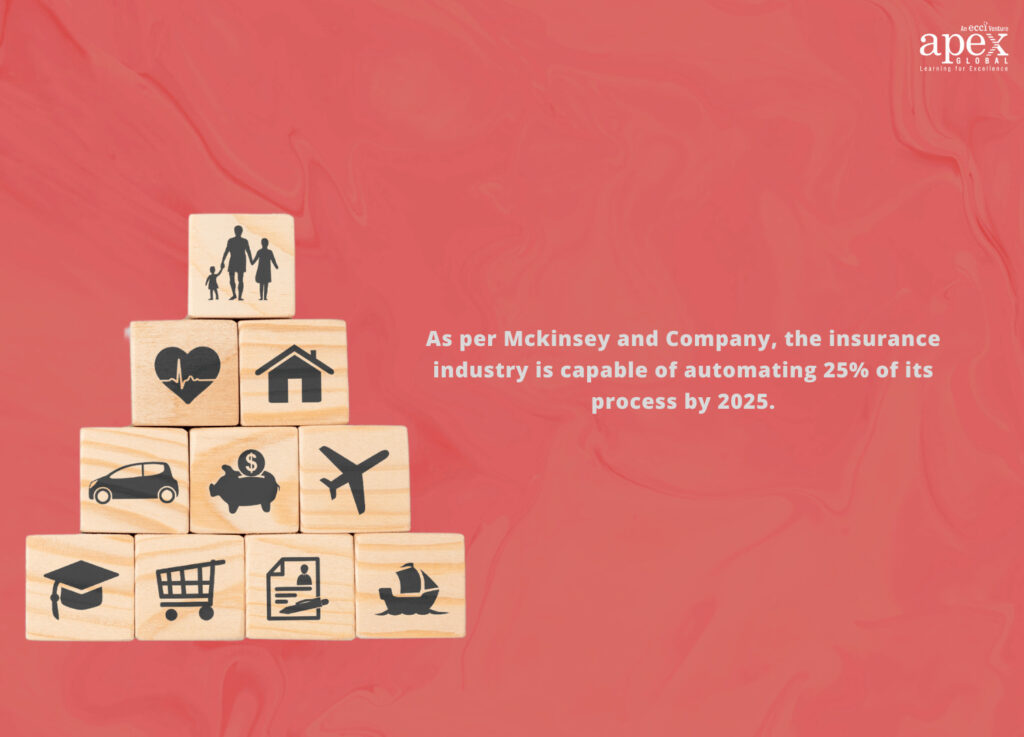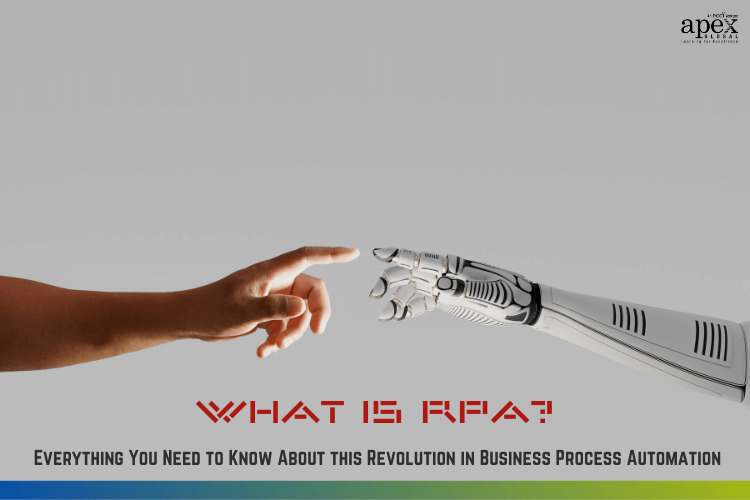In this fast-paced world, organizations are constantly seeking innovative solutions to enhance efficiency, reduce costs, and stay ahead of the competition. One such revolutionary technology that has taken the business world by storm is Robotic Process Automation (RPA).
RPA has reshaped traditional business process automation. It has empowered companies to streamline operations, improve productivity, and unleash new realms of potential.
But what exactly is Robotic Process Automation?
In this article, we’ll look at what RPA is, its benefits, challenges, use cases, and more. Ready to dive into the world of RPA? Let’s go!
What you'll find in this article [hide]
- 1 An introduction to Robotic Process Automation
- 2 What is Robotic Process Automation?
- 3 How does Robotic Process Automation work?
- 4 Eight business benefits of Robotic Process Automation
- 5 Three challenges of Robotic Process Automation
- 6 Five Robotic Process Automation use cases with real-world examples
- 7 Conclusion
An introduction to Robotic Process Automation
People around the world spend a lot of time doing repetitive work, with tasks like manual computer work and data entry taking up a sizeable portion of an office worker’s day. In fact, according to a report by Asana, repeated tasks are costing businesses as much as 19 working days per year, and that’s the number for just one employee.

Now, imagine having a digital assistant that never sleeps, never makes mistakes, and can effortlessly handle all those mundane, repetitive tasks that eat up your time and energy. That’s exactly what Robotic Process Automation (RPA) brings to the table.
What is Robotic Process Automation?
So, what exactly is RPA?
RPA is a business process automation technology that automates manual, time-consuming operations by using virtual software robots or bots. A software bot is a computer program created to perform specific actions. These programs can be made to perform both simple and complex activities. So not only they can automate processes that involve repetitive tasks, some bots can even simulate or interact with humans. Examples: Virtual assistants such as Alexa from Amazon, Siri from Apple, and Cortana from Microsoft.
So, with RPA, you’ll have your very own team of digital robots at your fingertips, ready to tackle all those tedious, rule-based tasks that have been draining your productivity. From data entry and invoice processing to generating reports and even customer support, RPA can handle it all, allowing you to focus on the more strategic and creative aspects of your job.

How does Robotic Process Automation work?
Now, you might be wondering, how does Robotic Process Automation actually work? Well, to put it simply, RPA software is first trained to observe your actions within a specific process. It learns how you navigate your applications, what buttons you click, and what data you input. Then, it recreates those actions and performs them at lightning speed, often even faster than a human could.
Without diving into technical details, we’ll explain how it works in three simple steps.
- Training
- Operation
- Orchestration
Step 1: Training
The first step is to install the bot on your computer or server and give it some instructions to follow in order to perform a task. This step doesn’t require technical skills or complex software configurations. It can be easily done by either recording the process or designing it from definition documents.
Step 2: Operation
After the bot is trained, the next step is operation. Operation varies depending on whether you’re running an attended or unattended RPA.
For attended RPA, the bots must be triggered by a user for them to start or stop working. These bots occasionally need more information, like login details, to carry out specific tasks accurately.
For unattended RPA, the bots can operate without any involvement from humans. It uses trigger events to inform bots when to start and stop working on their tasks. These bots run in the background on a virtual machine or a server.
Step 3: Orchestration
Orchestration is required if you’ve implemented RPA on a large scale and you need to manage and administer your bots. Orchestration allows the user to install bots, launch or stop them, prescribe tasks for them, and monitor performance using a control panel.
Eight business benefits of Robotic Process Automation
RPA offers a multitude of business benefits for organizations around the world. Let’s take a look at some of the most important benefits.
- Enhanced productivity: RPA automates repetitive tasks, which frees up the employees’ time to focus on strategic activities, resulting in increased productivity and efficiency.
- Improved accuracy: By eliminating human error, RPA ensures consistent and accurate results, reducing mistakes and improving the quality of data.
- Reduced cost: RPA reduces labor costs by automating all the manual processes, minimizing the need for outsourcing, and reducing the risk of costly errors and rework.
- Scalability and flexibility: RPA can easily scale to handle increased workloads, allowing businesses to adapt and grow without significant infrastructure changes.
- Regulatory compliance: RPA ensures compliance by executing processes according to predefined rules and regulations, minimizing the risk of non-compliance and associated penalties.
- Improved customer experience: By automating customer-facing processes, RPA enables faster response times, accurate order processing, and personalized interactions, leading to enhanced customer satisfaction.
- Employee satisfaction: By automating repetitive and mundane tasks, RPA reduces employee burnout by allowing them to focus on more fulfilling and intellectually challenging work.
- Competitive advantage: Implementing RPA enables organizations to stay ahead of the competition by streamlining operations, delivering faster and more efficient services, and embracing digital transformation.

Three challenges of Robotic Process Automation
While RPA offers numerous benefits, it’s important to acknowledge and address the potential challenges that may arise during its implementation. Some key challenges of RPA are:
a) Security and data privacy concerns
As RPA involves interacting with sensitive data and systems, organizations need to have security measures in place to protect against data breaches, unauthorized access, and potential vulnerabilities. They have to implement strong authentication and access controls to restrict bot access to sensitive data and systems. They can also train their employees on data security practices and foster a culture of cybersecurity awareness.
b) Integration with existing systems and applications
Integrating RPA with complex systems or a diverse technological landscape can be a challenge due to incompatibilities and system limitations. To overcome this, companies will need to conduct a thorough system analysis to identify potential integration issues beforehand and collaborate closely with IT teams to ensure proper system compatibility and address any integration gaps.
c) Difficulty in scaling
Despite the fact that RPA can handle several tasks at once, it can be challenging to scale in an organization due to internal changes or regulatory updates. In a Forrester report, 52% of customers claim that growing their RPA program is difficult for them. Thus, it’s important for organizations to choose a scalable RPA platform, establish a comprehensive automation strategy and simplify their processes before scaling their RPA.
Five Robotic Process Automation use cases with real-world examples
Several industries today use RPA technology to streamline their business processes. Here are some RPA use cases with real-world examples that showcase the transformative power of automation.
Use case #1: Banking
It’s no surprise that the banking sector is at the forefront of adopting RPA solutions. In fact, according to a report by Forrester, 36% of all RPA use cases are found within the finance and accounting space. From customer research and account opening to inquiry processing and anti-money laundering, RPA bots are at the helm, transforming mundane manual processes into lightning-fast, error-free operations.
Case in point:
UiPath built an RPA platform for Heritage Bank, the largest mutual bank in Australia. Thanks to the technology, 90% of the data mining operations while creating living expense reports and 80 customer-facing, back-office, and middle-office activities were automated.
Use case #2: Insurance
The Insurance industry is full of monotonous, repetitive processes which are well suited for automation. For example, you can apply RPA to regulatory compliance, claims processing operations, insurance underwriting tasks, and policy management.
Case in point:
One of the top insurers in Europe, PZU, implemented RPA to improve the customer service experience for both their customers and agents. After automating a number of repetitive tasks, the company managed to completely remove human errors and reach 100% accuracy of entered data. Shortly after the solution’s implementation, PZU improved the efficiency of work with a 15% increase in the number of claims decisions per employee.

Use case #3: Retail
RPA has become a crucial part of the contemporary retail industry due to the growth of e-commerce, and it has helped improve back-office operations and the customer experience. Some popular applications are customer relationship management, warehouse management, order processing, feedback handling, and fraud detection.
Case in point:
New Zealand’s biggest grocery distributor, Foodstuffs, implemented an RPA solution and scaled it across 200 stores. This project resulted in 11 successfully automated processes and 9,000 hours freed for Foodstuffs employees to use for more cognitive tasks.
Use case #4: Healthcare
The healthcare industry is embracing RPA with open arms, transforming patient care, optimizing operations, and boosting efficiency. Some important applications include patient registration, claims processing, medical coding & billing, appointment scheduling, and inventory management.
Case in point:
Western Norway Regional Health Authority, Helse Vest RHF used RPA to lessen the administrative burden on its doctors & nurses and allow them to spend more time with the patients. As a result, they were able to save $550,000 on postage alone and also saved 14,000 working hours for medical professionals annually.
Use case #5: Automotive
Nowadays, cars leveraging Android Automotive OS are on the rise. RPA can allow automated:
- Over-the-air software updates
- Location data exchange
- Anti-theft protocols updates
- Navigation features updates
Case in point:
Constellation Automotive Group sells more than 1 million used cars annually, which involves many complex operations. The company automated 30 processes in 2 years. As a result, RPA manages around 1.1 million transactions monthly. The project saved 126,000 hours for employees to focus on their most critical customer-related duties.
Conclusion
As we have seen in this blog post, the impact of automation is undeniable, transcending industry boundaries and geographical limitations.
From small startups to multinational corporations, organizations of all sizes are recognizing the immense benefits of automation, leading to a continuous surge in its adoption. As automation continues to reshape the way we work, businesses that embrace this trend are gaining a competitive edge, driving the need for talented individuals who can navigate this evolving landscape.
With each passing day, the automation industry expands its horizons, presenting exciting opportunities for those who are ready to seize the future and build rewarding careers in this transformative field. Learn more about career possibilities in the RPA field here.
If you are an IT professional looking to get into automation, then APEX Global’s Business Process Automation with UiPath course is a great place to start. Our course will help you master key RPA concepts and gain hands-on experience with the UiPath tool. You’ll be able to learn to design various automation robots, tackle real-world business processes, and create enterprise-grade solutions. Enroll today to get started!
Have any questions? Reach out to us today at training@apexgloballearning.com. We’d love to hear from you!


